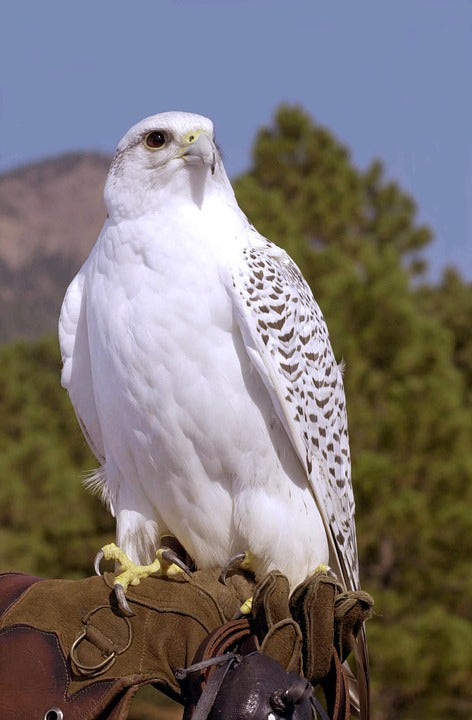Offer
Provide additional details about the offer you're running.
Provide additional details about the offer you're running.
Provide additional details about the offer you're running.

Holding the title for the largest falcon in the world, the Gyrfalcon is a breathtaking sight to behold. This large bird is recognized around the world for its large size and predatory instincts. Long associated with humans, for their stout hunting prowess, this bird is often used in the art of falconry and is recognized by many countries and organizations. The gyrfalcon is the official bird of Iceland, the unofficial bird of Canada’s Northwest Territories and the white phase gyrfalcon is the official mascot of the United States Air Force Academy.
While this bird is synonymous with the Arctic coasts of North America, Europe and Asia, it does become somewhat of a vagrant species, typically after the breeding season and in the winter months. Just last week amateur birder Karen Hass reported a sighting of a gyrfalcon in southern Ontario’s Windsor-Essex region, a location that seldom sees these magnificent birds. In fact, the last time a gyrfalcon was spotted in that region had escaped from private ownership.
Their diet consists mainly of other bird species, and they can often be found feasting on ptarmigan, one of their favourite meals. They have also been recorded preying on gulls, jaegers, ducks, geese, short-eared owls, sparrows, and redpolls, among many other species of birds. During the breeding season, these birds have also been known to regularly store their prey in an act of food caching, retrieving the frozen food for themselves or their young at a later time.
Where to find the Gyrfalcon
In North America, this species can be found in the Arctic regions of Northern Canada and Alaska, spending the spring and summer months breeding in the tundra, often close to rivers or coasts. During the winter months, these birds will relocate to more southern locations in search of reliable food sources and can be found throughout most Canadian provinces with appearances recorded in the states of Washington, Montana, Wyoming, the Dakota’s and Minnesota. In the east of Canada, these birds are not heavily recorded in the southern areas of Ontario, but can be found throughout Quebec and some of the Maritime Provinces.
Identification
Bearing some resemblance to the Peregrine Falcon, this large bird sports a broad chest and can appear from nearly pure white to dark gray or black, with most of the species falling in the gray colouring category. These birds have a faint mustache on their face with large, broad, pointed wings and a long, barred tail.
Vocals
The calls of the gyrfalcon are situational and range from a “chup, chup, chup” sound when foraging food to the “kak, kak, kak’ sounding alarm call they broadcast when they believe they are threatened or in danger.
High Quality Blend